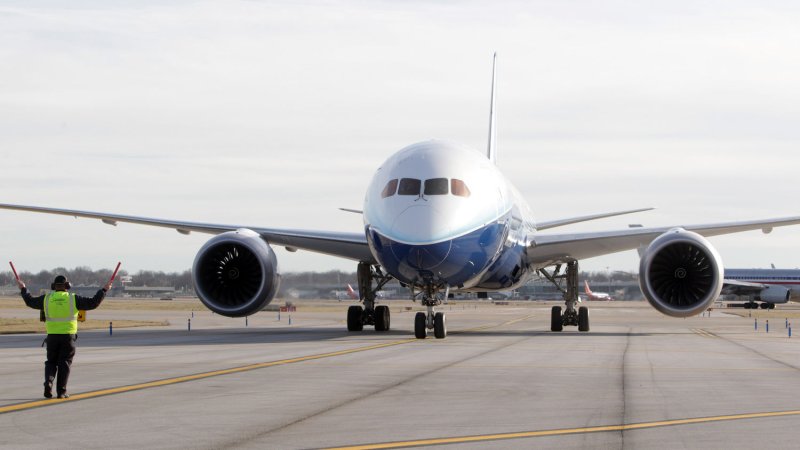1 of 2 | A Boeing 787 Dreamliner is guided on the tarmac at Lambert -St. Louis International Airport, arriving for a media tour in St. Louis on January 30, 2012. UPI/Bill Greenblatt |
License Photo
TOKYO, March 15 (UPI) -- Japanese government officials and the Boeing company were at odds Friday over when the troubled 787 Dreamliner jets would return to active service.
At a press conference in Tokyo, Dreamliner chief engineer Michael Sinnett said the grounded jets would be back in service within weeks, The New York Times reported.
Sinnett said his time estimate might be slightly inaccurate, but not by much.
He also said he trusted the planes.
"I'd gladly have my family fly in this airplane," he said.
Japanese transport minister, Akihiro Ota, however, took a wait-and-see approach.
"We will work closely with the Federal Aviation Administration to examine and confirm the safety of the aircraft," Ota said Friday morning.
"The tests are only beginning," he said, referring to tests the FAA said would be required before it certified Dreamliners could return to commercial flying.
The planes were grounded in January after two fires that began in the battery compartments of the jets. The Dreamliner is equipped with lithium-ion batteries that recharge faster than regular batteries, but are also more volatile, the Times said.
Boeing has designed a fix for the jets, but it is a system of containment, as finding the cause of the two fires has been elusive.
No electric surge was detected by the instruments on either plane before the fire.
"We may never get to a single root cause," Sinnett said.
He also said the company had thrown enormous resources at the problem, with more than 500 engineers conducting an estimated 200,000 hours of analysis.
Boeing said it studied every known potential cause of the fires.
They came up with 80 potential causes, which were grouped into four categories, each of which was solved, the company said.
The solution, for now, is a stainless steel box weighing 150 pounds that simply doesn't allow a fire to get rolling because it keeps oxygen out.
"We looked at everything that could impact the battery, and we applied a broad set of solutions that encompasses everything that this large team of experts believed someday could happen. And it led to a very robust solution," Sinnett said.
As the fires occurred on planes owned by two Japanese airlines -- All Nippon Airways and Japan Airlines -- Boeing is focused on pushing Japanese regulators to allow the planes to fly.










